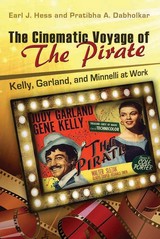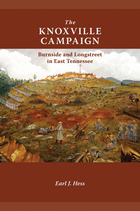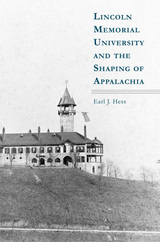
During Metro-Goldwyn-Mayer’s glory days, the studio’s famous Arthur Freed Unit made an extraordinary string of dazzling musicals. One of its very best was The Pirate. Based on a successful 1942 Broadway production, the film was directed by Vincente Minnelli and starred Gene Kelly and Judy Garland. It showcased some of the brightest work of these three gifted moviemakers and entranced many critics and viewers with exotic set décor and costumes, brilliant Technicolor application, stunning dance routines, and a clever plot about an actor who pretends to be a famous pirate to win the love of a fanciful island girl.
The Pirate has been studied by film historians, gender studies scholars, and film studies professionals since it was released in 1948. The Cinematic Voyage of The Pirate contributes to a growing literature asserting the importance of single-film production history and the significance of the film musical in the golden age of Hollywood.

In the fall and winter of 1863, Union General Ambrose Burnside and Confederate General James Longstreet vied for control of the city of Knoxville and with it the railroad that linked the Confederacy east and west. The generals and their men competed, too, for the hearts and minds of the people of East Tennessee. Often overshadowed by the fighting at Chickamauga and Chattanooga, this important campaign has never received a full scholarly treatment. In this landmark book, award-winning historian Earl J. Hess fills a gap in Civil War scholarship—a timely contribution that coincides with and commemorates the sesquicentennial of the Civil War
The East Tennessee campaign was an important part of the war in the West. It brought the conflict to Knoxville in a devastating way, forcing the Union defenders to endure two weeks of siege in worsening winter conditions. The besieging Confederates suffered equally from supply shortages, while the civilian population was caught in the middle and the town itself suffered widespread destruction. The campaign culminated in the famed attack on Fort Sanders early on the morning of November 29, 1863. The bloody repulse of Longstreet’s veterans that morning contributed significantly to the unraveling of Confederate hopes in the Western theater of operations.
Hess’s compelling account is filled with numerous maps and images that enhance the reader’s understanding of this vital campaign that tested the heart of East Tennessee. The author’s narrative and analysis will appeal to a broad audience, including general readers, seasoned scholars, and new students of Tennessee and Civil War history. The Knoxville Campaign will thoroughly reorient our view of the war as it played out in the mountains and valleys of East Tennessee.
EARL J. HESS is Stewart W. McClelland Distinguished Professor in Humanities and an associate professor of history at Lincoln Memorial University. He is the author of nearly twenty books, including The Civil War in the West—Victory and Defeat from the Appalachians to the Mississippi and Lincoln Memorial University and the Shaping of Appalachia.

Located near Cumberland Gap in the rugged hills of East Tennessee, Lincoln Memorial University (LMU) was founded in 1897 to help disadvantaged Appalachian youth and reward the descendents of Union loyalists in the region. Its founder was former Union General Oliver Otis Howard, a personal friend of Abraham Lincoln, who made it his mission to sustain an institution of higher learning in the mountain South that would honor the memory of the Civil War president.
In Lincoln Memorial University and the Shaping of Appalachia, LMU Professor Earl J. Hess presents a highly readable and compelling history of the school. Yet the book is much more than a chronology of past events. The author uses the institution’s history to look at wider issues in Appalachian scholarship, including race and the modernization of educational methods in Appalachia. LMU offered a work-learn program to help students pay their way, imparting the value of self-help, and it was hit by a massive student strike that nearly wrecked the institution in 1930. LMU has played an important role in shaping what higher learning could be for young people in its region of southern Appalachia.
The volume examines the involvement of O. O. Howard and his unflagging efforts to establish and fund the school; the influence of early twentieth-century industrial capitalism—
Andrew Carnegie and John D. Rockefeller were benefactors—on Appalachia and LMU in particular; and the turn-of-the-century cult of Lincoln that made the university a major repository of Lincolniana.
Meticulously researched and richly illustrated, Lincoln Memorial University and the Shaping of Appalachia is a fresh look at the creation, contributions, and enduring legacies of LMU. Students, alumni, and friends of the university, as well as scholars of Appalachian culture and East Tennessee history, will find this book both enlightening and entertaining.
Earl J. Hess holds the Stewart W. McClelland Chair in History at Lincoln Memorial University. He is the author of more than a dozen books on Civil War military history, the latest of which is Into the Crater: The Mine Attack at Petersburg.
READERS
Browse our collection.
PUBLISHERS
See BiblioVault's publisher services.
STUDENT SERVICES
Files for college accessibility offices.
UChicago Accessibility Resources
home | accessibility | search | about | contact us
BiblioVault ® 2001 - 2024
The University of Chicago Press









